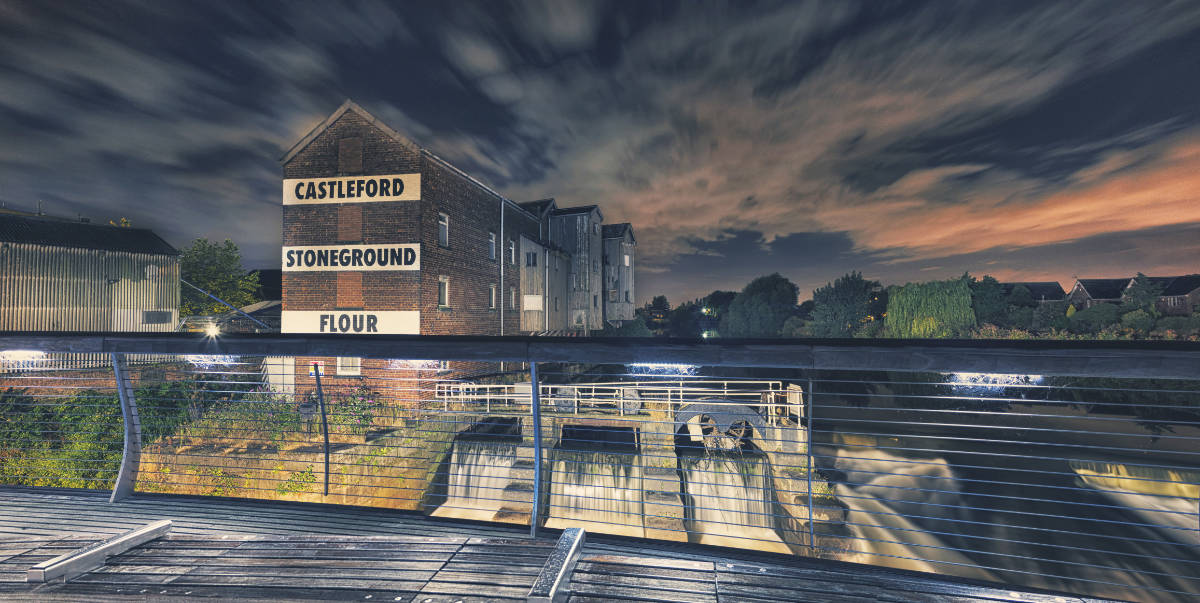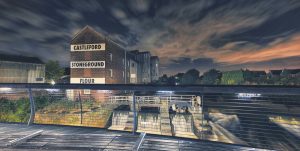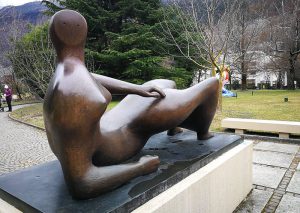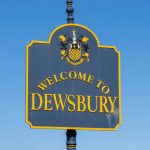
Castleford in Five Minutes
All the best bits of Castleford in one unique place.
If you have ever come across Five Minutes Spare on your social media feeds, you will already know that we write fun and informative travel and tour guides to cities and large towns all over the UK. We have hundreds of town guides on file, so have a browse our website to see if you can find your own home town.
Today we are talking about Castleford and finding out what the best attractions in town are, as well as reviewing the history. We all know it is the history of quaint market towns which makes them so special. Castleford sits on the River Aire in West Yorkshire. It’s about ten miles south and east of Leeds and sources say it remained a quiet village until the Industrial Revolution. We want to know what was there before that, and how far back this town’s history goes. So where better to start than back where it all began…
Early History of Castleford
Castleford sits on the River Aire in West Yorkshire. It’s about ten miles south and east of Leeds and sources say it remained a quiet village until the Industrial Revolution. We want to know what was there before that, and how far back this town’s history goes.
We know that the Romans invaded Britain in the first century and stayed till around 40AD when they retreated back across the landscape to warmer climes. Who could blame them? We also know that to take over Yorkshire, they had to do some serious negotiating. The two tribes associated with Yorkshire were the Brigantes – a huge amalgamation of several tribes – and the Parisi, who would have become their next victims had the Romans not shown up and given everyone a common enemy.
Asides from those two established tribes, the area of Castleford has seen settlement since away back before ‘modern’ humans. Castleford was an important meeting place for the tribes of the Bronze Age. The land around town sports a few Henges, which the travellers passing through here would adapt into homes. There is so much ado about the Bronze Age in Wakefield that they added it to the home page under reasons to visit. We might do that too.
The town even had chariots before the days of the Romans. An Iron Age chariot was uncovered here when workers attempted to improve the A1. They now call this the Ferry Fryston Iron Age Chariot. You can see the chariot at the local museum, where you can also find out about prehistoric Castleford.
Castleford became an important site for Roman-era excavations over the years. As well as the garrison at Lagentium, they also found evidence of a civilian encampment. Tens of thousands of Roman-era artefacts have come from this site. Legend has it that the current Castleford sits right on top of the Roman fort. Back then, there was a Roman road which ran across a fjord in the river. Historians believe that they built the settlement here so that they could control the crossing. Roman Britain sounds like less and less of a fun place the more you hear about it.
So when they say it was ‘just’ a village at the start of the industrial era, that doesn’t quite cover the thousands of years of history that came before the village did. When you are walking the streets of Castleford, you are walking on thousands of years of history.
The Middle Ages
Castleford was not mentioned in the Doomsday Book 1066-86, which means it was probably too small to bother counting. Wakefield did make it onto the survey though, with multiple entries for the same location. This happens when a location is a collection of settlements rather than one single unit. As a result, the Domesday pages indicate the area comprised 1.7 households. However, when you break it down into what that 1.7 households included, you get:
- 9 villagers
- 11 freemen
- 22 smallholders
- And 3 priests
So it must have been a large house. Between them, all the above included 51 fields for ploughing and 13 teams to plough them. There were 3 x 3 furlongs of woodland with 6 x 4 leagues of mixed lands. There were 2 churches and the land was worth 60 pounds in 1066, reduced to 15 pounds after the Norman invasion. Wow that’s a lot of history so how about a quick break from it.
Fun Facts About Castleford in West Yorkshire
There are fun facts and interesting pieces of trivia about Castleford all over the internet. We like to find the best trivia about any given area in our travel guides. So here is what we managed to scoop up about Castleford in Wakefield:
- Castleford isn’t just famous for art, it’s also famous for sweet treats. In 1970 Rowntree’s factory was one of the big employers in town and this factory produced After Eights. Nestle recently took over the factory and it has since closed down.
- Fun trivia: in Castleford, locally made sweets are called spice. This is not to be confused with the synthetic cannabinoid which is turning people into zombies all over the UK. Liquorice is known as Spanish. We are not sure why.
- Other famous products made in Castleford include Bellamy’s, who made chocolate-covered liquorice, Allison’s ground their wholegrain flour here, Haribo golden bears arrived here all the way back in the 60s. Pontefract cakes took their inspiration took their inspiration from the chocolate liquorice… the list goes on.
- The Romans called the town Lagentium, even though when they got here it would have had its own name. The Romans were funny about renaming stuff to fit into their ‘better’ language.
- The Industrial Revolution was the biggest growth spurt this town ever saw. The population of Castleford was 890 in 1811, rising to 14,143 in 1891.
As you can see, Castleford has a bit more going on below the surface than most people think. Not only is it interesting, but it’s also filled with deliciousness. Why it is not on the map for foodies we have no idea.
What is Castleford Famous For?
Castleford was the home of the sculptor Henry Moore. He ended up creating a variety of very famous sculptures from the 1920s all the way through to the 1980s. He was a prolific artist, creating 1,100 sculptures throughout his life. Asides from the sculptures, the Henry Moore Foundation contains details of 13,000 other pieces. It just goes to show that you either are an artist, or you are not an artist. That kind of workload comes from someone who eats, sleeps, breathes, and bathes their profession. Henry Moore was one of the best.
Ok, let’s get back to history and see if we can dig up any clues.
The Industrial Revolution
Castleford saw coal mined here in the early 19th century. The coal powered the local industries, which included chemical production, pottery, glass, and textile industries. The town received its own motto back in the middle ages: ‘Audacter Et Sincere,’ which translates to ‘boldly and frankly.’ Over the two hundred years from the 1800s up until 2000, the small village became a large town, finishing with over 30,000 residents during the last census.
In the 1700s there were two notable incidents in the town. In 1724 William Stukeley, a famous antiquarian passed through and wrote a description of the old Roman settlement. Later, in 1795, severe poverty was gripping the town. It became so bad that a group of locals liberated a corn ship which was on the Wharf. The military had to come in and resolve the situation. They arrested 12 ringleaders and said no more about it.
A Period Of Growth
In the 1800s things really started to pick up for this seemingly small village. In 1808 Jesse Hartley built the stone bridge over the Aire based on their father’s plans. This is the same person who built Albert Docks in Liverpool. The population was only 890 in 1811. The Aire and Calder navigation canal opened in 1826. The town received a railway link to York in 1836, which is about 10 years before the rest of the north did. In 1858 the first stones for the Carlton Street Wesleyan Chapel went down. The church did not open its doors until 1861.
In 1849 there was a cholera outbreak, the third in as many years. These outbreaks led to the eventual creation of the Public Health act, which enforced things like clean running water and sewerage systems.
The town gained its first police station in 1862-3. It included 1 sergeant and 6 PCs… a number that soon doubled. In 1865 the town had a cooperative society. By 1868 the town was mining its own coal in the Wheldale Pit. There was a second rail line added between Castleford and Ardsley in 1869. The current railway station was not finished until 1871. It’s had a few refurbs since then.
The market hall saw an official opening in 1880 and the locks were widened in 1884. A new courthouse went up in 1897 with a new police station the following year. Henry Moore was born in 1898.
The Modern Era
Starting from the beginning of the 20th century, the area gained many facilities and amenities. After the boom in population, the town needed the infrastructure to catch up. It went something like this:
- The population in 1911 was 23,090.
- In 1912 the town gained 4 separate cinemas.
- A further picture house opened in 1921, and the following year the first of the four cinemas closed.
- In 1924, the majestic theatre opened.
- The Market Hall burned down in 1927, just after Christmas.
- The market, the local hospital, and the war memorial maternity home, all opened thanks to HRH Princess Ann in 1929.
- The following year the local chemical plant exploded. There was extensive damage to the houses and shops in town, as well as 13 people dead and 32 injured. Nobody realises how dangerous it is to make bleach and degreaser until the building blows up.
- In 1963 they got a bus stop.
- Another cinema closed in 1864.
- The Civic Hall opened in 1970.
- During the 70s there were 8 working coal mines in and around the town.
- In 1980 Henry Moore unveiled his sculpture and presented it to the town.
- Another cinema closed in 1987 – the last one.
- By 1997, most of the collieries closed.
- The town got a millennium Marketplace clock in 1999.
After that, the town gained its Xscape leisure complex opened in 2003, and the population rose to just under 40,000 people.
Modern-day Castleford exists on the backs of those miners. It was such a strong coal mining area that the people who remained after the mines closed fell immediately into poverty. It has been a long slog since the 70s to try and make up for this. The town opened several shops and retail centres since then, trying to put money back into the area. So far, it seems to be working. The town is evolving into a commuter town for the rest of Wakefield. It’s a nice place to live If you want to be removed from the madness of the city.
Famous People from Castleford
Every English town has a handful or more of celebrities who used to live here, still, live here, or were born here. We managed to find out about the most famous faces in Castleford so you can look out for them when you are buying your vape in the corner shop. Castleford celebrities include:
- Loads of rugby players from the famous local rugby club, including Paul J Anderson, Arthur “Bruss” Atkinson, Mark D Bailey, George W Banks, Ben Blackmore, Abi Burton, Fred Carter, Harold Burton, Will Dagger, Daryl Clark, Gary Cooper, Matt Crowther, Will Dagger, Jonathon Davies, we could go on but honestly, that’s enough players for a whole team.
- Peter Broughton, a cricketer, for a change of pace.
- There are also many footballers from Castleford, including Richard Foulkes, Tommy Gale, Sammy Gledhill, John Illingworth… You get the idea.
- Peter Meakin, the journalist, is a Castleford man.
- Pool player Darryl Peach.
- The composer Wean Shepherd.
- An author, Val Wood, came from Castleford.
There are huge numbers of famous people coming from Castleford. Especially footballers and rugby players. If you live in Castleford and you want to become famous, we’d say you have a higher chance than you would have in other towns and cities. Make use of your location and aim for the stars.
Best Attractions in Castleford
This is part of the article where we get to explore the best attractions in town. Here are the best bits of Castleford that you should see while you are in town.
Landmarks

Joe Kirby Photography: Shutterstock.com
The Castleford Bridge is a footbridge version of the car bridge. This bridge runs over some gentle waterfalls, allowing for nice views and the odd kingfisher. The bridge was part of the town rejuvenation project. It runs over 130 metres and takes an ‘s’ shape design. This takes a traditional Victorian approach to modern bridge building. Ideal for a romantic stroll or a photo snap as can be seen above.
Outdoor Attractions
You can’t come this far north without trying out the Diggerland theme park. This place allows both adults and children to enjoy theme park rides designed around the concept of diggers. The park has 20 different rides, each described as exciting and unique. They have dodgems, go-karting, and a sky tower, and most of it runs courtesy of massive 180/360 excavators. Nobody quite realises how big these are until they see them in real life.
If you love the great outdoors, head to the RSPB centre at Fairburn Ings. Fairburn Ings is a protected habitat which formed after re-wilding measures over the old coal workings. 20 years after the last pit closed, the space is green as can be. It’s a lesson on how quickly nature would take over if we simply were not here. It’s also good for bird spotting, hiking, and immersing yourself in nature generally.
Sports and Teams
The Mend-a-Hose Jungle is home to the local rugby team – the Castleford Tigers. The team has run for 150+ years now. They have a first team, and a junior team, and play both home and away regularly. If rugby is your first sporting love, Castleford is the must-visit town.
Castleford FC, founded in 1907, was dissolved in 1936. Rugby became my favourite sport here. There is a Castleford Town Junior Team nowadays, but that is the closest you get. You can always hop into Wakefield for more football.
Castleford Cricket Club was established in 1902 and has since sent many great players to the Golden Acre. The club only has an adult team, and only adult men. If you want the chance to play cricket as a woman, you can contact them here.
Recreation
The top attraction in this town is the Snozone. This indoor skiing slope is suitable for both skiing and snowboarding. They have an onsite kitchen and they cater to both kid’s parties and adult parties. They routinely run family days, events, and games. Check it out.
Let’s not miss out on Xscape Yorkshire, which is in Castleford. There is a great bowling alley inside, along with the Snozone area. The complex has multiple fun things to do. You can learn more on their website.
There is an outside option for this, too. Go book a space in the Yorkshire Flight Simulator and engage with the F16 fighter pilot experience. This is the ultimate adventure for anyone who dreams of touching the sky one day.
Cultural Sites
You absolutely must head to the Castleford Museum while you are here. The museum traces 15,000 years of Wakefield/Castleford history. There is a nearby café, onsite parking, disabled access, and a hearing loop for the differently abled. The museum talks you through coal mining in the area and how that coal-powered pottery and glasswork production in Wakefield. It tells you about the prehistoric tribes who lived here and all about the Roman influence. They also have a library on site.
The Henry Moore statue was presented in front of the civic building when it was first unveiled in the 1980s. Since then, the town moved it to the library building. Moving it indoors will preserve the work. The statue is named the Reclining Figure.

Henry Moore Reclining Figure Image: art_inthecity via Flicker CC By 2.0
Head to the Castleford Phoenix Theatre and catch a show. They often run a matinee as well as evening shows. It is not the biggest of theatres, however, this often adds to the atmosphere.
Where to shop in Castleford?
There are countless places in Castleford where you can get your shopping head on. The Junction 32 shopping outlet is to the south. Inside the town itself, you also have Carlton Lanes shopping centre. This is one town you don’t need to go elsewhere to buy anything you need. If you are visiting the local cities, do it for the culture because you won’t need them for clothing.
Where to eat and drink in Castleford?
Locals love the Italian food at Bella Italia in Castleford. Described as a funky family chain with fine Italian dining, we would expect nothing less than Mediterranean excellence. The Restaurant Ruta is on Carlton Street. This place is run by Lithuanians and offers a tasty treat from Eastern Europe. Alternatively, head to the Twisted Tree. It has gorgeous bistro-style food and excellent choices in gin.
Other Notable Nearby Attractions
There are plenty of other places you can enjoy if using Castleford as a staycation base. Yorkshire is full of goodies that you can get stuck into. From North to West, East Riding to South Yorkshire, check out these notable attractions nearby:
- Head to the beautiful market town of Beverley to shop.
- Go into Goole and enjoy the many marinas.
- See the famous cathedral at Ripon.
- Visit Bridlington to spend time on Yorkshire’s most famous beaches.
- Batley is one of those ancient towns that you can never get enough of.
- Go to the spa in Harrogate.
- Don’t forget to take the tours in York while you are in the area.
There are dozens more notable Yorkshire staycation destinations. Browse our site if you are interested in taking a Yorkshire holiday this year.
Got Five Minutes?
If you still have time left over on your lunch break, you can head to our homepage and browse through more of our local travel guides. Alternatively, look us up on Facebook and give us a follow. We can’t guarantee your dreams will come true, but we can give you a bit of a laugh meantime.



